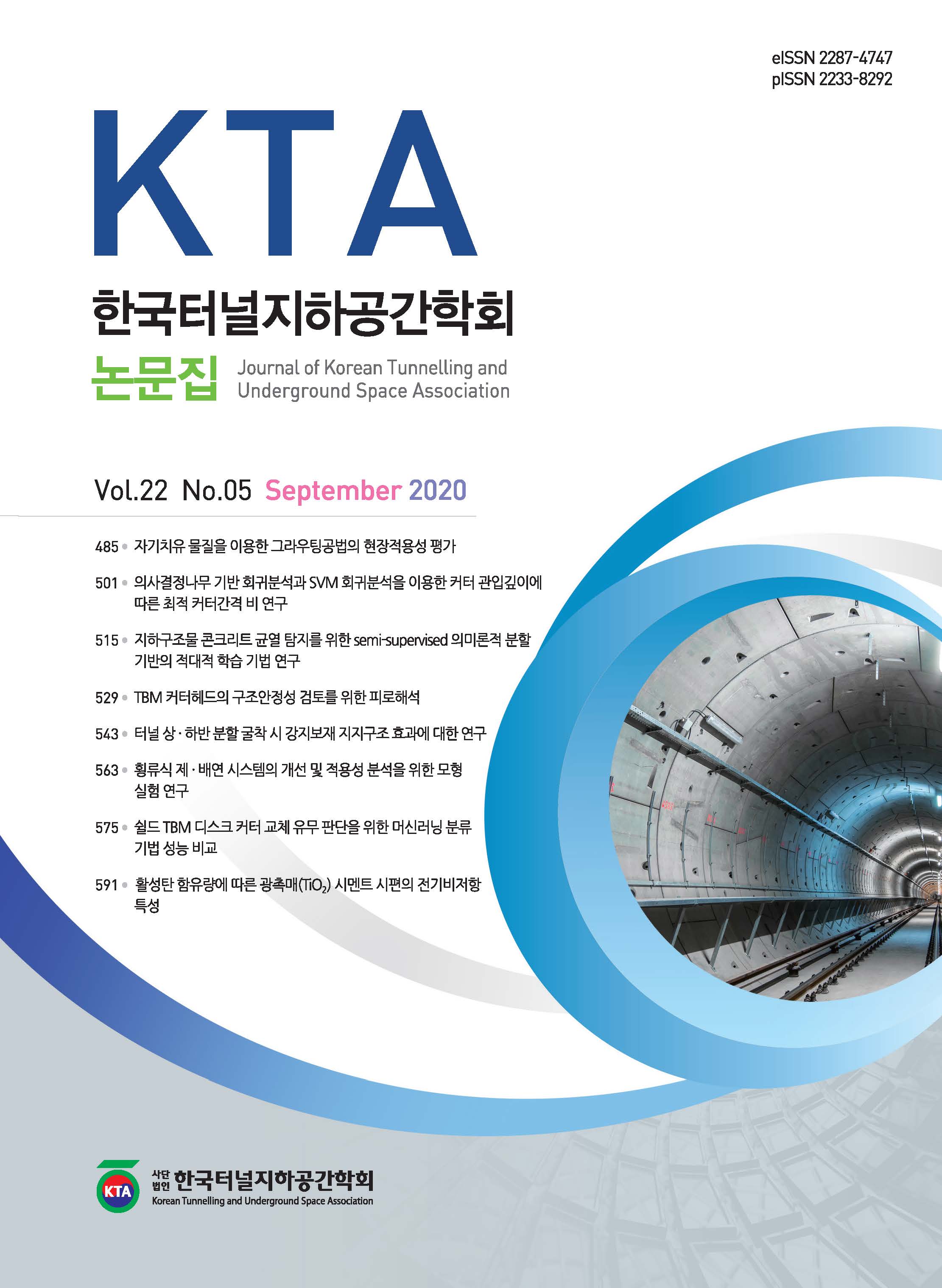- 권한신청
- P-ISSN2233-8292
- E-ISSN2287-4747
- KCI
 ISSN : 2233-8292
ISSN : 2233-8292
전극의 기하학적 형상이 전기비저항 탐사에 미치는 영향: 수치 해석 연구
Influence of electrode geometry on electrical resistivity survey: Numerical study
이승훈 (순천대학교)
류희환 (한국전력공사 전력연구원)
정성훈 (순천대학교)
초록
전기비저항 탐사 방법은 매질의 표면에 관입된 두 전극의 전위차와 전류와의 관계를 통해 전기 저항을 측정하고, 형상 계수를 이용하여 매질의 고유한 특성인 전기비저항을 계산한다. 현장 및 실대형 크기의 전기비저항 실험은 전극과 매질 사이의 접촉 면적이 적고, 전극 간 거리가 충분하기 때문에 계산상 편의를 위해서 동일한 표면적을 가진 반구형으로 치환하여 전기비저항을 산정한다. 하지만, 실내 소규모 크기의 전기비저항 실험은 전극의 지오메트리(전극의 관입 깊이, 전극사이의 거리, 전극의 길이와 반지름 크기)로 인해서, 등전위면과 전류 흐름이 달라지게 되므로, 궁극적으로 전기비저항 값의 오차를 야기한다. 본 연구는 기존 연구에서 유도된 4가지 전극 형상(반구, 원기둥, 반구형 팁을 가진 원기둥, 콘형 팁을 가진 원기둥)에 따른 전기 저항 이론식을 정리하고, 전극 형상을 고려한 전기 저항 수치 해석을 실시하였으며, 이론식과 수치 해석 결과들의 비교를 통해서 개발된 수치 해석 모듈을 검증하였다. 또한, 각 전극 형상에 따른 전극 주변과 전극 사이에 형성된 전기 저항 분포를 분석하였다. 추가적으로, 현장 전기비저항 탐사에서 주로 사용되는 콘형 팁을 가진 원기둥 전극의 전기적 특성에 따른 전류 흐름 분포를 고찰하였다.
- keywords
- 전기비저항 탐사, 전극의 형상, 전기 저항 이론식, 수치 해석 모듈, 전기 저항 분포, Electrical resistivity survey, Electrode geometry, Theoretical electrical resistance, Numerical module, Distribution of electrical resistance
Abstract
Electrical resistivity survey have been widely conducted at diverse scales, from a few centimeters for laboratory tests to kilometers for field tests. It measures electrical resistance through relationship of electric potential difference and current between two electrodes penetrated on the surface of medium, and eventually quantifies electrical resistivity known as inherent properties of the medium. In field or full-scale test, it assumes the electrodes as equivalent half-sphere electrodes that have a same surface area with different electrodes for ease of calculation because the contact area between electrode and medium is small and sufficient distance between two electrodes. However, small-scale laboratory test is significantly affected by the electrode geometries (penetrated depth, height, radius of electrode and distance between electrodes), which change the equipotential surface and electric current flow. Indeed, the electrode geometries may eventually cause a difference of electrical resistivity value. This study reviews the theoretical electrical resistance derived with various electrode geometries (half-sphere, cylinder, cylindrical with half-spherical tip, cylindrical with conical tip) and verifies the developed numerical module by comparing results with the theoretical electrical resistance. The distributions of electrical resistance around electrodes and among electrodes are analyzed. In addition, it is discussed how the electrical characteristic of cylindrical electrode with conical tip widely used in field test has effect on the electric current flow.
- keywords
- 전기비저항 탐사, 전극의 형상, 전기 저항 이론식, 수치 해석 모듈, 전기 저항 분포, Electrical resistivity survey, Electrode geometry, Theoretical electrical resistance, Numerical module, Distribution of electrical resistance
- 다운로드 수
- 조회수
- 0KCI 피인용수
- 0WOS 피인용수

